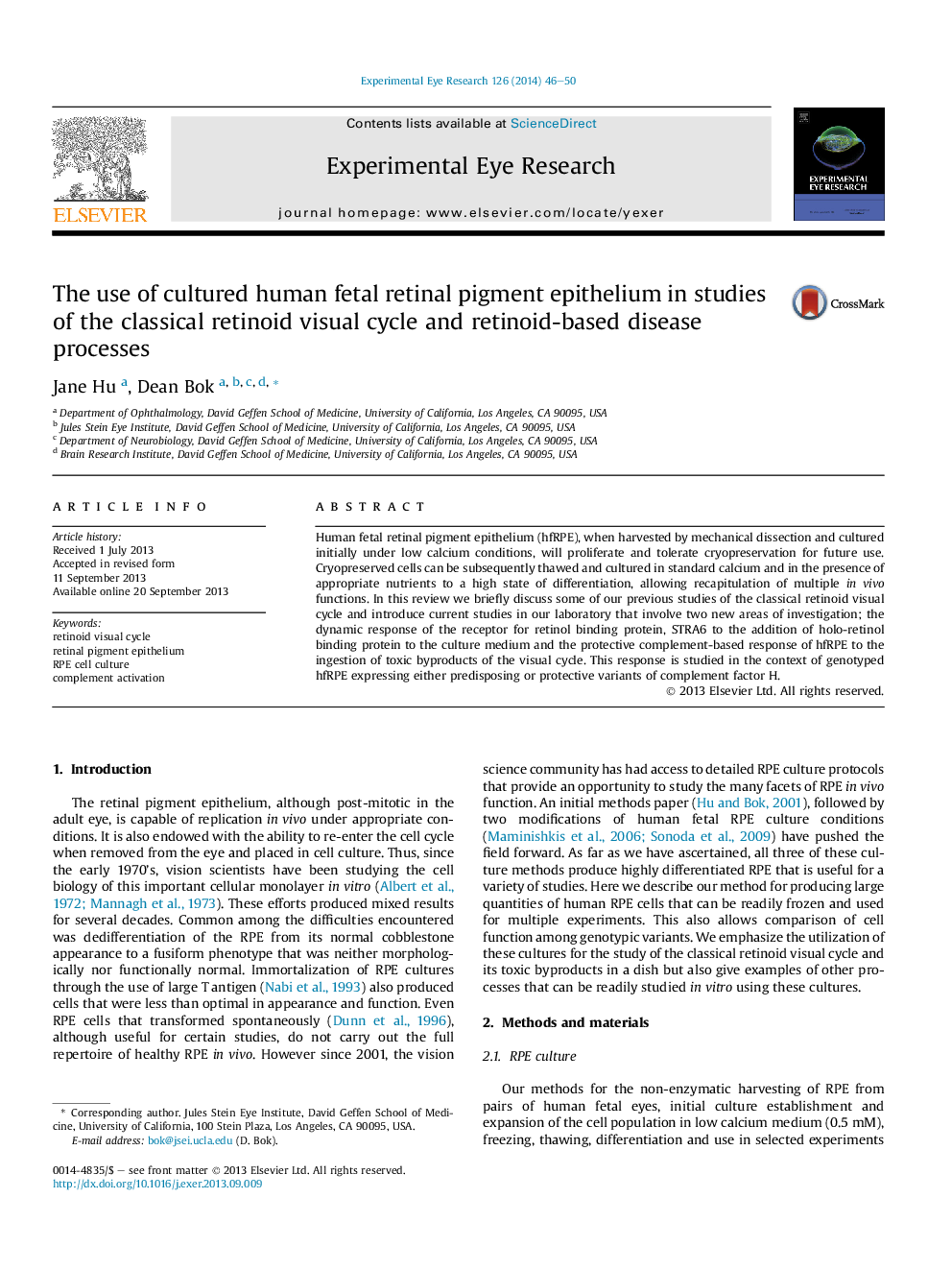| Article ID | Journal | Published Year | Pages | File Type |
|---|---|---|---|---|
| 6196933 | Experimental Eye Research | 2014 | 5 Pages |
â¢We established well differentiated RPE for in vitro studies.â¢We study the visual cycle and its toxic byproducts in cultured RPE cells.â¢We showed the importance of cultured RPE cells in the study of normal and disease processes.
Human fetal retinal pigment epithelium (hfRPE), when harvested by mechanical dissection and cultured initially under low calcium conditions, will proliferate and tolerate cryopreservation for future use. Cryopreserved cells can be subsequently thawed and cultured in standard calcium and in the presence of appropriate nutrients to a high state of differentiation, allowing recapitulation of multiple in vivo functions. In this review we briefly discuss some of our previous studies of the classical retinoid visual cycle and introduce current studies in our laboratory that involve two new areas of investigation; the dynamic response of the receptor for retinol binding protein, STRA6 to the addition of holo-retinol binding protein to the culture medium and the protective complement-based response of hfRPE to the ingestion of toxic byproducts of the visual cycle. This response is studied in the context of genotyped hfRPE expressing either predisposing or protective variants of complement factor H.
